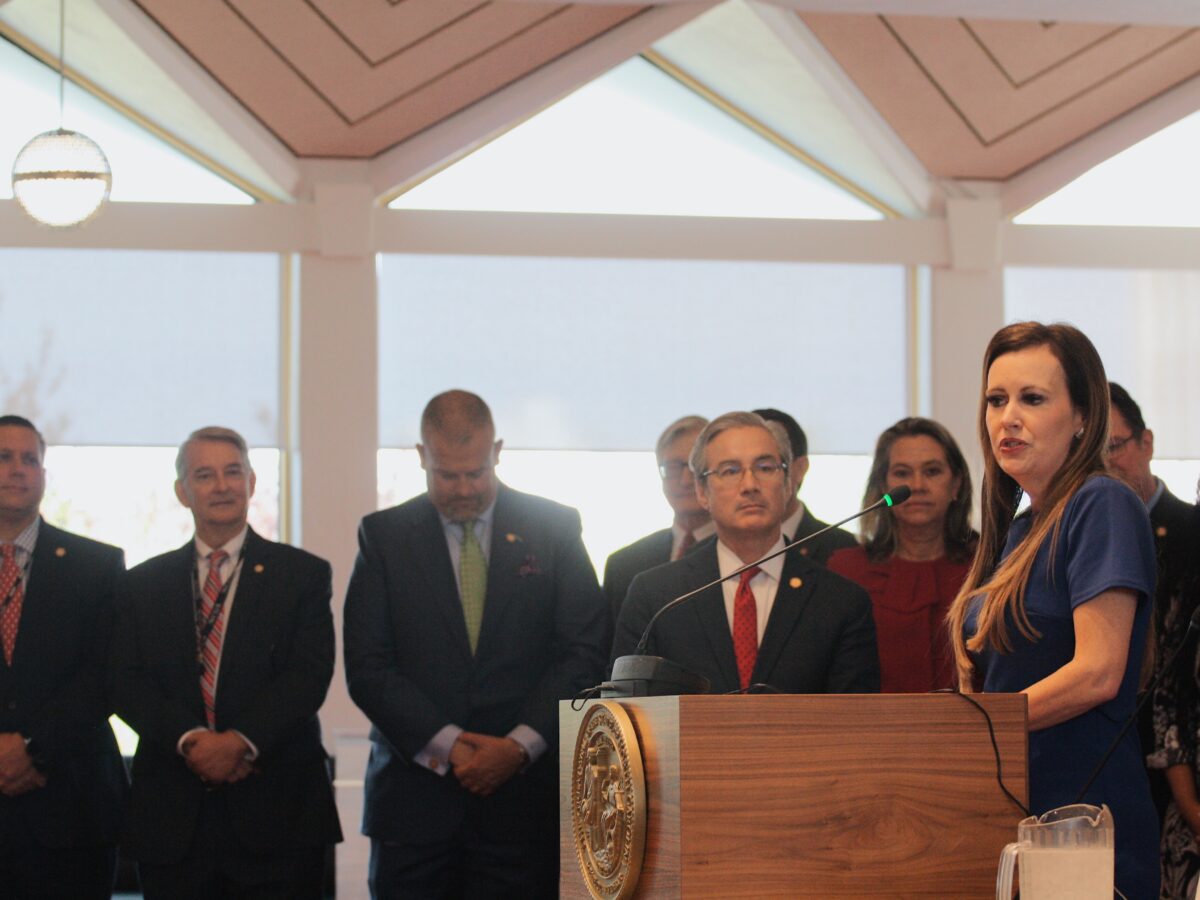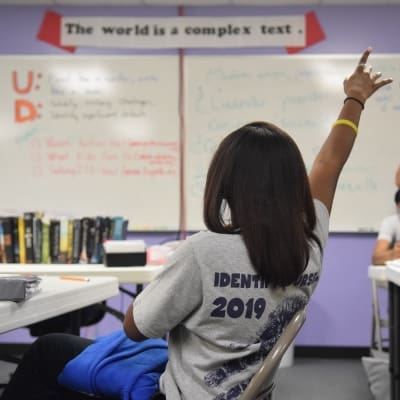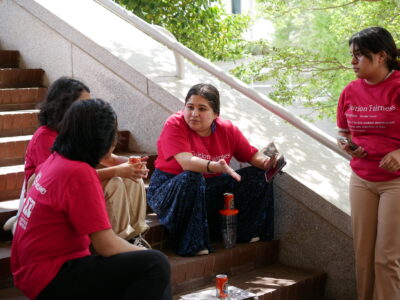

|
|
Editor’s Note: This article was updated on January 3, 2024 to include Mary Shuping and Kris Nordstrom’s quotes.
In 2023, the Republican-led legislature passed legislation that will expand school choice statewide. In response, Democratic Gov. Roy Cooper issued a state of emergency for our public schools.
Here is a look at the events and the issues that will play a key role in determining the future of public education in North Carolina this year.
Events to watch in 2024
Rollout of school choice expansion
New applications for private school vouchers offered through the Opportunity Scholarship program will be open from Feb. 1 to March 1, according to the N.C. State Education Assistance Authority (NCSEAA), which administers the program.
Things to note from their website:
- Parents started creating accounts as early as December 2023. Here is the application process.
- There is a webinar to learn more on Jan. 5 at noon. Register here.
- Parents of any North Carolina student entering kindergarten through 12th grade may apply.
- Scholarships range from $3,246 to $7,213 and are based on a family’s household income.
- Scholarships can be used to pay the required tuition and fees to attend an eligible private school.
- In early April, families who apply will get an award offer or waitlist notification.
Leandro hearing
On Feb. 22, the almost 40-year-old Leandro lawsuit will be heard in the North Carolina Supreme Court. The decision to rehear the case was split along party lines.
The case is commonly called “Leandro” because of the name of the lead plaintiff, but Republican justices have instead labeled the case “Hoke County,” according to the Carolina Journal.
The 2024 elections
On March 5, primary elections will be held statewide. You should expect campaigning for the general election, which is on Nov. 5, to begin in earnest the next day. Here is more information on the 2024 elections in North Carolina from the N.C. State Board of Elections.
In addition to local and federal races, EdNC will be covering the statewide races for governor, lieutenant governor (who sits on the N.C. State Board of Education and the N.C. State Board of Community Colleges), superintendent for public instruction, attorney general, and treasurer.
As of Dec.30, 2023, there were 2,701,215 North Carolina voters registered as unaffiliated; 2,414,169 registered Democrats; and 2,220,459 registered Republicans.
The short session of the N.C. General Assembly
The short session is scheduled to convene on April 24 at noon.
You can see the full list of bills that can be taken up in the short session here, but generally legislators revisit the budget, take up bills that met the crossover deadline, and consider recommendations from study commissions.
The end of child care stabilization funding
Federal child care stabilization funding ends on June 30, and EdNC is tracking closures.
Federal funding cliff for public schools
During the pandemic, the federal government issued three tranches of funding totaling $190 billion for school districts. The last round of funding must be committed by Sept. 30. Districts can request 18-month extensions on spending the funds and even longer in extraordinary circumstances, but most have not done so.
The loss of federal funding that’s being used to pay educators has researchers nationwide concerned.
Issues to watch in 2024
The implications of school choice for public schools
The state budget authorized up to $1 million for outreach, scholarship education, and application assistance for parents and students, which may raise awareness of school choice statewide.
Mary Shuping, an attorney and the director of government and external affairs for NCSEAA, says, “The law previously allowed SEAA to use up to $500,000 in unexpended Opportunity Scholarship funds at the end of the fiscal year ‘to contract with a nonprofit corporation representing parents and families.’ Parents for Educational Freedom of North Carolina was awarded the current contract through the RFP process. The amendment in the budget increased the amount SEAA may use to $1 million and allows SEAA ‘to contract with one or more nonprofit corporations representing parents and families.’ This new language does not increase PEFNC’s contract amount.”
In this first year of the expansion of school choice, our research anticipates there will be hot spots where this policy change is more acutely felt by public schools. In smaller districts, losing even a handful of students makes a difference.
Those hot spots are likely to be influenced by many factors, including:
- How competitive the district choices are with educational choices in other sectors.
- Where there is existing private school capacity at a price point that the voucher would make a difference.
- Where schools with charters that were revoked reorganize as private schools.
- The establishment of private online schools.
- Where churches set up private schools.
- Where homeschooling parents set up private schools.
- Where there is existing or expanding charter school capacity.
- Trends in population growth.
Here are the requirements to set up a private school in North Carolina. Note there is no minimum number of students. Once set up, the private school must submit a new school signup request with NCSEAA.
Some public school districts may be able to smooth the initial impact on the number of students served and their budgets, if they can:
- More effectively tell their story and all of the ways they serve students and communities.
- Leverage their fund balances, which operate like savings accounts.
- Increase the support of their school foundations and other local philanthropy.
- And secure more local funding, which will depend on the strength of their local tax base and the willingness of their county commissions.
Here is our most recent analysis of fund balances. Some districts are showing signs of financial distress already.
We anticipate school districts will be notified in April of how many students received a voucher so that they can prepare their budgets for the 2024-25 year to present to county commissions in May and start working on their master schedules. Depending on the impact, issues such as strategic staffing, equitable rostering, change management, and even school closure may bubble up in the spring.
Longer term, as school choice expansion is implemented and the impact on current and future market share across districts is better understood, expect there to be conversations about pluralism. The concept is not new but is more prevalent abroad — it is seen by some researchers and advocates “as a middle path between the libertarian approach that advocates unfettered choice and the state-oriented approach.”
According to the Johns Hopkins School of Education, “Educational pluralism is a structure for public education in which the government funds and regulates a wide range of schools equally,” and all the types of schools “are held to the same set of high academic standards regardless of their model.”
Federal funding
With Republican candidates talking on the campaign trail about closing the U.S. Department of Education and converting federal funding to block grants for school choice, there is a lot at stake for public schools just in the 2024 federal elections.
Tennessee recently had a discussion about opting out of federal funding that is worth watching.
Possible growth in the number of charter schools
Many are worried that the shift from the Charter School Advisory Board to the Charter School Review Board will open the flood gates on charter approvals. North Carolina started its charter experiment in 1996 with a cap of 100 on charter schools. After the cap was lifted in 2011, the advisory board and the N.C. State Board of Education have kept growth steady with 209 charter schools now operating statewide and just 54 closures.
Implications of other policy changes from the long session
Graduation in three years
The state budget requires the N.C. State Board of Education to create a three-year graduation track for high school students.
Students who opt for that track — and who also seek a degree, diploma, or certificate at an eligible postsecondary institution — will be eligible for “early graduate scholarships” based on financial need.
This week, the N.C. State Board of Education will take this up. Here is the proposed rule.
There are about 100,000 school seniors across North Carolina in a given school year. We are watching the potential loss of average daily membership for seniors in school districts.
Funding in arrears
There is a provision in the budget instructing the N.C. Department of Public Instruction (DPI) to develop a funding in arrears model, which means public school funding would be based on the actual average daily membership from the prior school year, instead of projections for the upcoming school year.
Under the proposal, DPI would have to distribute funding in arrears starting with the 2024-25 school year.
“The Department shall provide funds from the ADM Contingency Reserve to fund public school units whose actual ADM for the current school year is higher than the actual ADM from the prior school year,” the budget also says.
This week, the N.C. State Board of Education will take this up, too. Here is the presentation, and here is the report.
With more students availing themselves of Opportunity Scholarships, it is not clear with regards to funding what happens if those students come back to a public school after the start of the academic year.
Clarification on the savings provision
Starting in the 2025-26 school year, the budget says “it is the intent of the General Assembly to reinvest in the public schools any savings realized by the State each year” when a student accepts a scholarship “that is less than 100% of the average State per pupil allocation for average daily membership for a student in a public school unit.”
Notably, there is no reinvestment for the 2024-25 school year — the first year of expansion — and there is no language explaining where this fund would be held and how it would be managed.
Policy changes that could re-resurface in the short session and beyond
The state budget — and who received special appropriations
The total state budget for 2023-24 is $30 billion, with $17.3 billion for education, and of that, $11.5 billion for public education.
Included in the state budget were 943 special provisions, totaling $1.2 billion, including $61.5 million for athletic facilities for school districts.
We expect additional special appropriations in the short session.
Teacher pay
South Carolina, Tennessee, and Arkansas all passed historic teacher raises in their most recent budgets.
In North Carolina, base salary raises ranged from 3.6 to 10.8% over the biennium. Beginning teacher pay is set to increase from $37,000 to $41,000 over the next two years. But the increase for teachers with 15 years or more of experience is a 3.6% raise over the biennium, or about $188 per month, before taxes.
Depending on the teacher turnover numbers in March, advocates may push again for North Carolina to pay educators a family-sustaining living wage.
Personal Education Savings Accounts
In 2023, House Bill 420, titled “Expand & Consolidate K-12 Scholarships,” was introduced and would have expanded the Personal Education Savings Accounts (PESA) program in North Carolina to include all students, eventually consolidating PESA with the Opportunity Scholarship program.
Both of these programs provide public money to students to use at non-public schools.
In 2024-25, the bill would have expanded PESA from being a program for students with disabilities to being open for everyone. And then, in 2026-27, the Opportunity Scholarship program and PESA would have merged.
Expect to see this idea surface again.
Called “super-vouchers,” a 2024 look ahead published by Brookings said this could be the “biggest policy change in K-12 education since Brown v. Board of Education — and likely to reverse Brown’s influence in several ways.”
Changing the way public schools are funded
A change in how we fund schools has also been proposed, which would move us from allotments to a weighted student funding formula. The big question would be whether the baseline investment in each student is adequate. Read more about the proposed change here.
Back in 2009, the legislature commissioned an evaluation of North Carolina’s school finance system by Denver-based consulting firm Augenblick, Palaich, and Associates (APA). A final report was submitted to lawmakers in September 2010, entitled “Recommendations to strengthen North Carolina’s school funding system.”
While there was bipartisan support for pursuing school finance reform at the time, it was put on hold because of the Great Recession.
Kris Nordstrom says the momentum didn’t wane because of the recession, instead he argues, “APA’s recommendations were all cost neutral…. They were put on hold because legislators didn’t think they were good ideas worth pursuing.”
Five years later, after the recession abated, the legislature asked the now defunct Program Evaluation Division to prepare this report. Hold on for the name of the report: “Allotment-specific and system-level issues adversely affect North Carolina’s distribution of K-12 resources.”
A legislative commission was convened in 2017 to take up the recommendations and the reports. It seemed like legislation might be taken up, and then COVID-19 happened.
Here is WestEd’s 2019 study on the cost adequacy, distribution, and alignment of funding for North Carolina’s K–12 public education system.
RTI submitted this report to the legislature on weighted student funding for exceptional children in August 2022. This week, the N.C. State Board of Education will take this issue up as well. Here is the report being considered by the board ahead of submitting it to the legislature.
Among many other considerations, we will be watching how these policy conversations unfold with regards to the prevalence and importance of dual enrollment opportunities for students statewide.
What can you do?
The cumulative effect of these policy changes post-pandemic are cause for concern, and advocates and educators for public schools would argue they are cause for alarm.
Take a look at our considerations for policymakers, superintendents, and philanthropists, as well as parents, educators, and advocates.
North Carolina loves its number one ranking as the top state for business. Corporations have historically played an important role in supporting public education in North Carolina. We are watching whether corporations and business advocacy organizations begin to speak with one voice on some of these key policy changes.
We believe in the power of the “go and see.” Invite your policymakers and other stakeholders to visit your child’s classroom and school with you.
Read EdNC. Sign up for our newsletters. When you share our articles, you extend our reach. Prompt the change you want to see.
What can EdNC do?
The EdNC team is uniquely positioned to document the impact of the expansion of school choice on all 115 school districts, all 58 community colleges, and all 100 counties in 2024 and beyond.
We believe there is power in being able to tell the story and collectively writing the history of what is happening to in our schools and communities from Murphy to Manteo.
Thank you for being part of EdNC’s architecture of participation. 2024 will matter.





